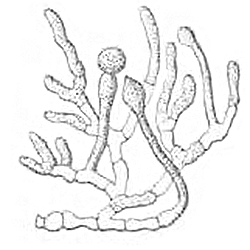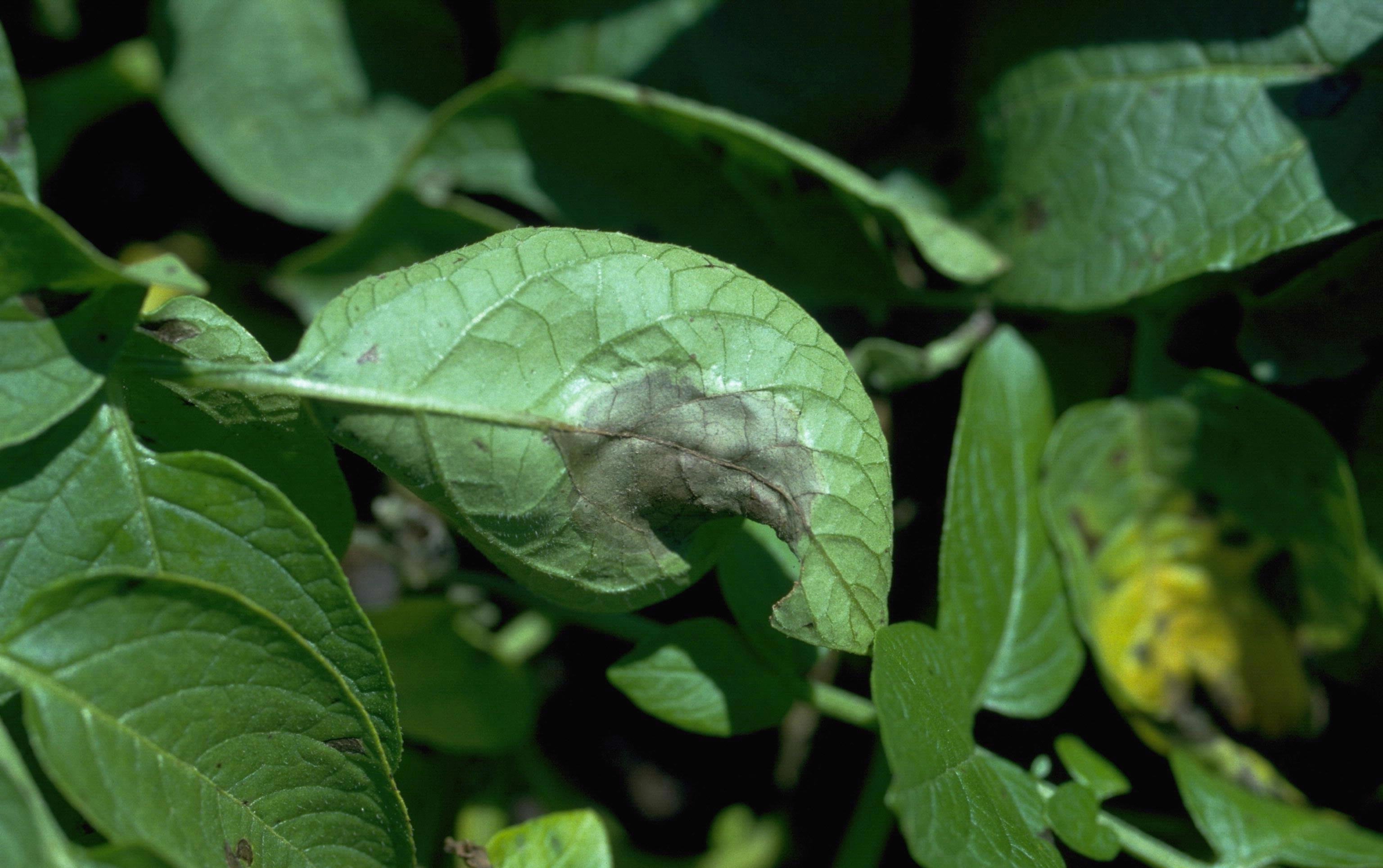|
EEF-1
eEF-1 are two eukaryotic elongation factors. It forms two complexes, the EF-Tu homolog EF-1A and the EF-Ts homolog EF-1B, the former's guanide exchange factor. Both are also found in archaea. Structure The nomenclature for the eEF-1 subunits have somewhat shifted around circa 2001, as it was recognized that the EF-1A and EF-1B complexes are to some extent independent of each other. Components as currently recognized and named include: The precise manner eEF1B subunit attaches onto eEF1A varies by organ and species. eEF1A also binds actin. Other species Various species of green algae, red algae, chromalveolates, and fungi lack the EF-1α gene but instead possess a related gene called EFL (elongation factor-like). Although its function has not been studied in depth, it appears to be similar to EF-1α. , only two organisms are known to have both EF-1α and EFL: the fungus '' Basidiobolus'' and the diatom ''Thalassiosira''. The evolutionary history of EFL is unclear. It may ... [...More Info...] [...Related Items...] OR: [Wikipedia] [Google] [Baidu] |
Eukaryotic Elongation Factor
Elongation factors are a set of proteins that function at the ribosome, during protein synthesis, to facilitate translational elongation from the formation of the first to the last peptide bond of a growing polypeptide. Most common elongation factors in prokaryotes are EF-Tu, EF-Ts, EF-G. Bacteria and eukaryotes use elongation factors that are largely homologous to each other, but with distinct structures and different research nomenclatures. Elongation is the most rapid step in translation. In bacteria, it proceeds at a rate of 15 to 20 amino acids added per second (about 45-60 nucleotides per second). In eukaryotes the rate is about two amino acids per second (about 6 nucleotides read per second). Elongation factors play a role in orchestrating the events of this process, and in ensuring the high accuracy translation at these speeds. Nomenclature of homologous EFs In addition to their cytoplasmic machinery, eukaryotic mitochondria and plastids have their own translation mac ... [...More Info...] [...Related Items...] OR: [Wikipedia] [Google] [Baidu] |
VARS
Valyl-tRNA synthetase is an enzyme that in humans is encoded by the ''VARS'' gene. Function Aminoacyl-tRNA synthetases catalyze the aminoacylation of tRNA by their cognate amino acid. Because of their central role in linking amino acids with nucleotide triplets contained in tRNAs, aminoacyl-tRNA synthetases are thought to be among the first proteins that appeared in evolution. The protein encoded by this gene belongs to class-I aminoacyl-tRNA synthetase family and is located in the class III region of the major histocompatibility complex The major histocompatibility complex (MHC) is a large locus on vertebrate DNA containing a set of closely linked polymorphic genes that code for cell surface proteins essential for the adaptive immune system. These cell surface proteins are calle .... See also * Valine-tRNA ligase References Further reading * * * * * * * * * * * * {{protein-stub ... [...More Info...] [...Related Items...] OR: [Wikipedia] [Google] [Baidu] |
Eukaryotic Translation
Eukaryotic translation is the biological process by which messenger RNA is translated into proteins in eukaryotes. It consists of four phases: gene translation, elongation, termination, and recapping. Initiation Translation initiation is the process by which the ribosome and its associated factors bind to an mRNA and are assembled at the start codon. This process is defined as either cap-dependent, in which the ribosome binds initially at the 5' cap and then travels to the stop codon, or as cap-independent, where the ribosome does not initially bind the 5' cap. Cap-dependent initiation Initiation of translation usually involves the interaction of certain key proteins, the initiation factors, with a special tag bound to the 5'-end of an mRNA molecule, the 5' cap, as well as with the 5' UTR. These proteins bind the small (40S) ribosomal subunit and hold the mRNA in place. eIF3 is associated with the 40S ribosomal subunit and plays a role in keeping the large (60S) ribosomal sub ... [...More Info...] [...Related Items...] OR: [Wikipedia] [Google] [Baidu] |
GSPT1
Eukaryotic peptide chain release factor GTP-binding subunit ERF3A is an enzyme that in humans is encoded by the ''GSPT1'' gene. Interactions GSPT1 has been shown to interact with BIRC2 Baculoviral IAP repeat-containing protein 2 (also known as cIAP1) is a protein that in humans is encoded by the ''BIRC2'' gene. Function cIAP1 is a member of the Inhibitor of Apoptosis family that inhibit apoptosis by interfering with the acti .... References Further reading * * * * * * * * * * * * * * * * * External links * {{gene-16-stub ... [...More Info...] [...Related Items...] OR: [Wikipedia] [Google] [Baidu] |
Horizontal Gene Transfer
Horizontal gene transfer (HGT) or lateral gene transfer (LGT) is the movement of genetic material between Unicellular organism, unicellular and/or multicellular organisms other than by the ("vertical") transmission of DNA from parent to offspring (reproduction). HGT is an important factor in the evolution of many organisms. HGT is influencing scientific understanding of higher order evolution while more significantly shifting perspectives on bacterial evolution. Horizontal gene transfer is the primary mechanism for the spread of antibiotic resistance in bacteria, and plays an important role in the evolution of bacteria that can degrade novel compounds such as human-created Bactericide, pesticides and in the evolution, maintenance, and transmission of virulence. It often involves Temperateness (virology), temperate bacteriophages and plasmids. Genes responsible for antibiotic resistance in one species of bacteria can be transferred to another species of bacteria through various m ... [...More Info...] [...Related Items...] OR: [Wikipedia] [Google] [Baidu] |
Archaeplastida
The Archaeplastida (or kingdom Plantae ''sensu lato'' "in a broad sense"; pronounced /ɑːrkɪ'plastɪdə/) are a major group of eukaryotes, comprising the photoautotrophic red algae (Rhodophyta), green algae, land plants, and the minor group glaucophytes. It also includes the non-photosynthetic lineage Rhodelphidia, a predatorial (eukaryotrophic) flagellate that is sister to the Rhodophyta, and probably the microscopic picozoans. The Archaeplastida have chloroplasts that are surrounded by two membranes, suggesting that they were acquired directly through a single endosymbiosis event by feeding on a cyanobacterium. All other groups which have chloroplasts, besides the amoeboid genus ''Paulinella'', have chloroplasts surrounded by three or four membranes, suggesting they were acquired secondarily from red or green algae. Unlike red and green algae, glaucophytes have never been involved in secondary endosymbiosis events. The cells of the Archaeplastida typically lack centriol ... [...More Info...] [...Related Items...] OR: [Wikipedia] [Google] [Baidu] |
Thalassiosira
''Thalassiosira'' is a genus of centric diatoms, comprising over 100 marine and freshwater species. It is a diverse group of photosynthetic eukaryotes that make up a vital part of marine and freshwater ecosystems, in which they are key primary producers and essential for carbon cycling Dreux Chappell, P., Whitney, L. A. P., Haddock, T. L., Menden-Deuer, S., Roy, E. G., Wells, M. L., & Jenkins, B. D. (2013). Thalassiosira spp. community composition shifts in response to chemical and physical forcing in the northeast Pacific Ocean. Frontiers in Microbiology, 4(SEP), 273. https://doi.org/10.3389/fmicb.2013.00273 ''Thalassiosira'' is a diverse genus, however one species within the genus, ''T. pseudonana'', has gained particular significance as the first marine phytoplankton to have its genome sequenced. ''T. pseudonana'' has since become a key model organism for studying diatom physiology. The ''T. pseudonana'' genome revealed novel genes for intracellular trafficking and metabolism ... [...More Info...] [...Related Items...] OR: [Wikipedia] [Google] [Baidu] |
Basidiobolus
''Basidiobolus ranarum'' is a filamentous fungus with worldwide distribution. The fungus was first isolated by Eidam in 1886. It can saprophytically live in the intestines of mainly cold-blooded vertebrates and on decaying fruits and soil. The fungus prefers glucose as a carbon source and grows rapidly at room temperature. ''Basidiobolus ranarum'' is also known as a cause of subcutaneous zygomycosis, usually causing granulomatous infections on a host's limbs. Infections are generally geographically limited to tropical and subtropical regions such as East and West Africa. Subcutaneous zygomycosis caused by ''B. ranarum'' is a rare disease and predominantly affects children and males. Common subcutaneous zygomycosis shows characteristic features and is relatively easy to be diagnosed; while, certain rare cases might show non-specific clinical features that might pose a difficulty on its identification. Although disease caused by this fungus is known to resolve spontaneously on its ... [...More Info...] [...Related Items...] OR: [Wikipedia] [Google] [Baidu] |
Fungi
A fungus ( : fungi or funguses) is any member of the group of eukaryotic organisms that includes microorganisms such as yeasts and molds, as well as the more familiar mushrooms. These organisms are classified as a kingdom, separately from the other eukaryotic kingdoms, which by one traditional classification include Plantae, Animalia, Protozoa, and Chromista. A characteristic that places fungi in a different kingdom from plants, bacteria, and some protists is chitin in their cell walls. Fungi, like animals, are heterotrophs; they acquire their food by absorbing dissolved molecules, typically by secreting digestive enzymes into their environment. Fungi do not photosynthesize. Growth is their means of mobility, except for spores (a few of which are flagellated), which may travel through the air or water. Fungi are the principal decomposers in ecological systems. These and other differences place fungi in a single group of related organisms, named the ''Eumycota'' (''t ... [...More Info...] [...Related Items...] OR: [Wikipedia] [Google] [Baidu] |
Chromalveolate
Chromalveolata was a eukaryote supergroup present in a major classification of 2005, then regarded as one of the six major groups within the eukaryotes. It was a refinement of the kingdom Chromista, first proposed by Thomas Cavalier-Smith in 1981. Chromalveolata was proposed to represent the organisms descended from a single secondary endosymbiosis involving a red alga and a bikont. The plastids in these organisms are those that contain chlorophyll c. However, the monophyly of the Chromalveolata has been rejected. Thus, two papers published in 2008 have phylogenetic trees in which the chromalveolates are split up, and recent studies continue to support this view. Groups and classification Historically, many chromalveolates were considered plants, because of their cell walls, photosynthetic ability, and in some cases their morphological resemblance to the land plants (Embryophyta). However, when the five-kingdom system (proposed in 1969) took prevalence over the animal� ... [...More Info...] [...Related Items...] OR: [Wikipedia] [Google] [Baidu] |
Red Algae
Red algae, or Rhodophyta (, ; ), are one of the oldest groups of eukaryotic algae. The Rhodophyta also comprises one of the largest phyla of algae, containing over 7,000 currently recognized species with taxonomic revisions ongoing. The majority of species (6,793) are found in the Florideophyceae (class), and mostly consist of multicellular, marine algae, including many notable seaweeds. Red algae are abundant in marine habitats but relatively rare in freshwaters. Approximately 5% of red algae species occur in freshwater environments, with greater concentrations found in warmer areas. Except for two coastal cave dwelling species in the asexual class Cyanidiophyceae, there are no terrestrial species, which may be due to an evolutionary bottleneck in which the last common ancestor lost about 25% of its core genes and much of its evolutionary plasticity. The red algae form a distinct group characterized by having eukaryotic cells without flagella and centrioles, chloroplasts that l ... [...More Info...] [...Related Items...] OR: [Wikipedia] [Google] [Baidu] |
Green Algae
The green algae (singular: green alga) are a group consisting of the Prasinodermophyta and its unnamed sister which contains the Chlorophyta and Charophyta/Streptophyta. The land plants (Embryophytes) have emerged deep in the Charophyte alga as sister of the Zygnematophyceae. Since the realization that the Embryophytes emerged within the green algae, some authors are starting to properly include them. The completed clade that includes both green algae and embryophytes is monophyletic and is referred to as the clade Viridiplantae and as the kingdom Plantae. The green algae include unicellular and colonial flagellates, most with two flagella per cell, as well as various colonial, coccoid and filamentous forms, and macroscopic, multicellular seaweeds. There are about 22,000 species of green algae. Many species live most of their lives as single cells, while other species form coenobia (colonies), long filaments, or highly differentiated macroscopic seaweeds. A few other organi ... [...More Info...] [...Related Items...] OR: [Wikipedia] [Google] [Baidu] |







